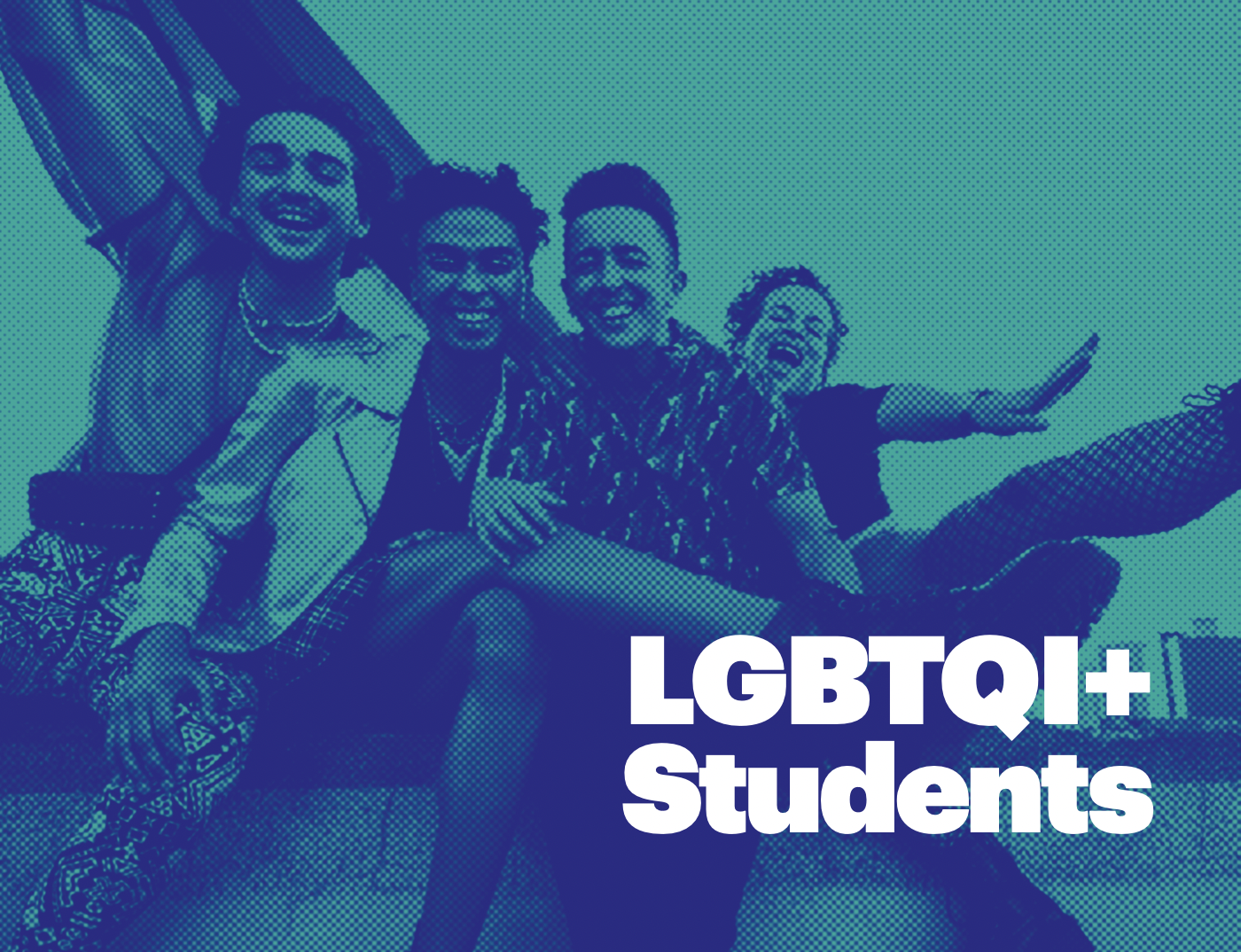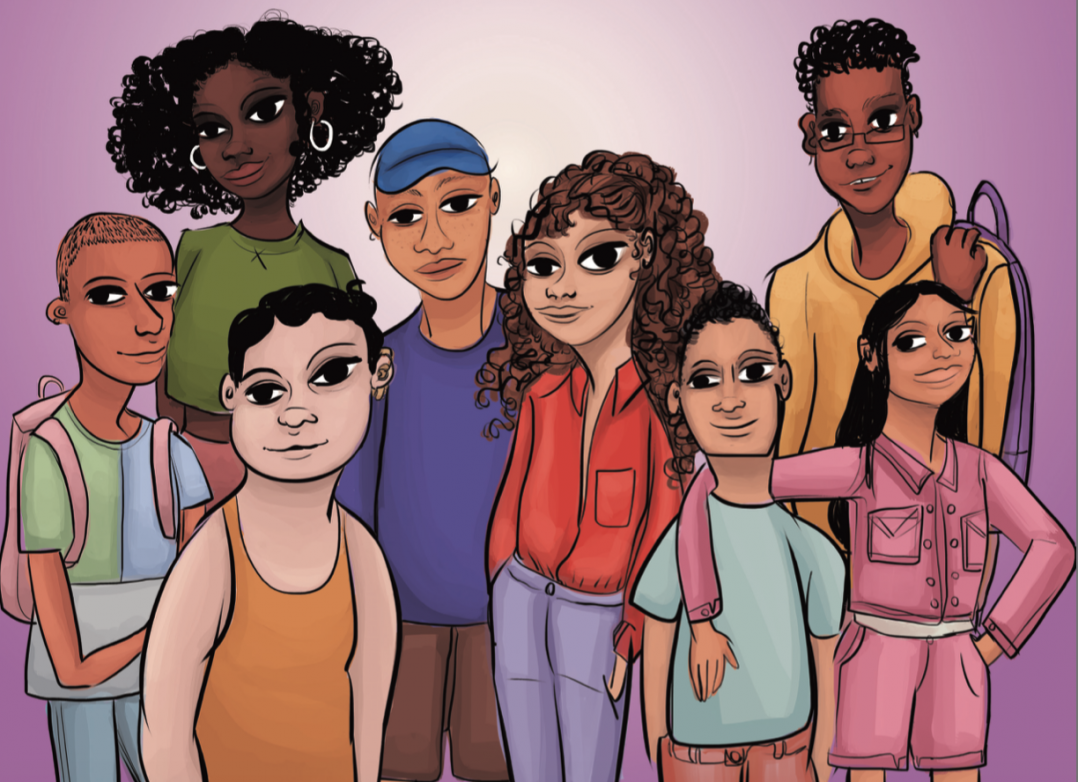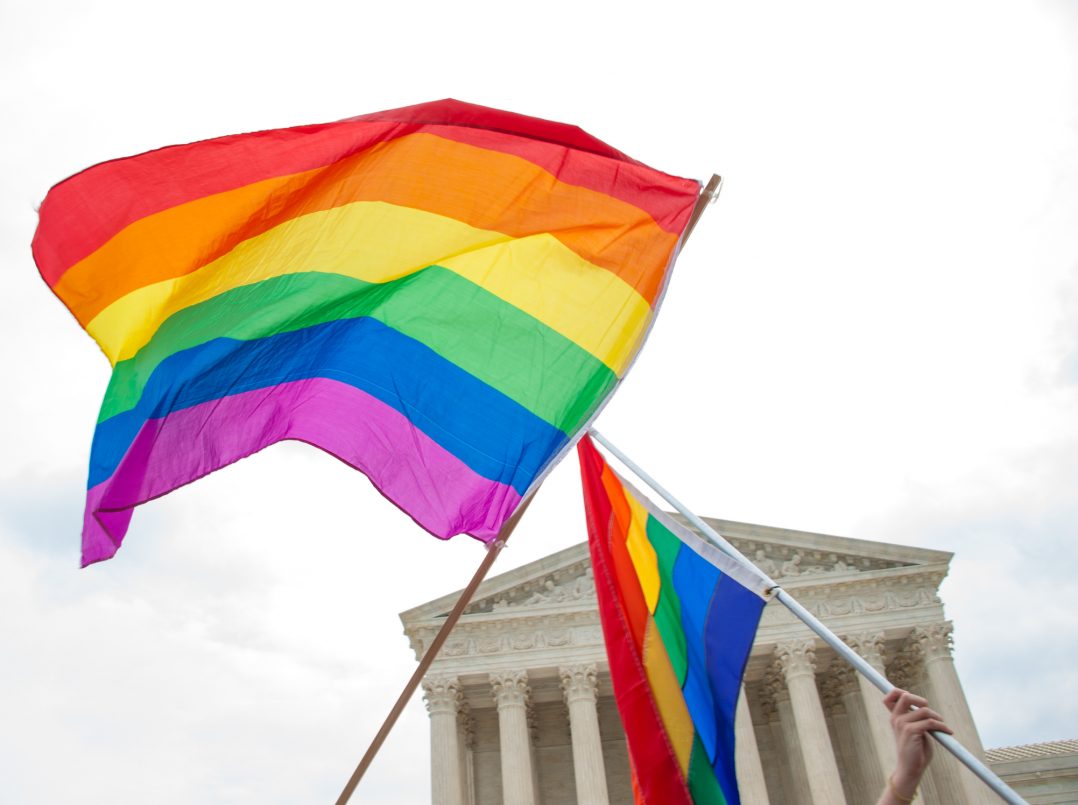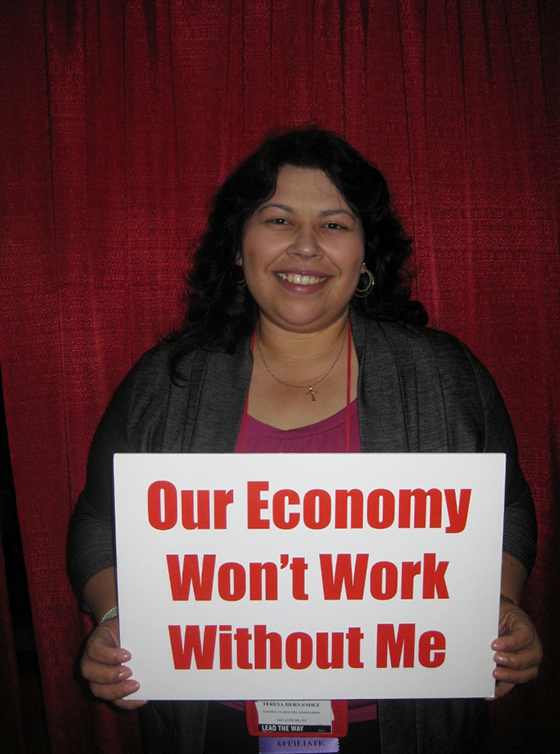Q&A: Shiwali Patel of the National Women’s Law Center Says Pride Month is an Excellent Time to Discuss the U.S. Government’s Upcoming Review of Title IX
This year’s Pride Month coincides with a related commemoration: the 50th anniversary of Title IX, which in 1972 outlawed sex discrimination in education. This summer, the Biden Administration is releasing proposed changes to the Department of Education’s Title IX rule, which could have a major impact on the ability of LGBTQI+ students to defend their rights. The National Women’s Law Center (NWLC), an UnidosUS partner, has been taking a lead on giving voice to all those impacted by Title IX, and especially those who find themselves in the most vulnerable situations, such as students who are LGBTQI+, of color, or both. They are doing so through a series of June webinars to commemorate Title IX. UnidosUS is working with them to utilize all of these opportunities. In honor of Pride Month, UnidosUS asked NWLC Director of Justice for Student Survivors & Senior Counsel Shiwali Patel about LGBTQI+ rights and Title IX.

Q. Title IX was passed in 1972, during one of the most active times of the U.S. feminist movement. As such, many people think of it as affecting women and girls, and without really considering other parts of their identity, or being inclusive of non-cis, hetero, white women and girls. Did Title IX explicitly recognize LGBTQI+ issues at that time?
A. Title IX is only 37 words long, but was always meant to be a broad, remedial law. So much of the protections that exist under Title IX are not clearly stated in the statute itself. But LGBTQI+ students are definitely included because discrimination based on gender identity or transgender status, sexual orientation, sex characteristics, are all forms of sex discrimination.
In recent years, this has been explicitly recognized by the Supreme Court and other federal courts, and the U.S. Departments of Justice and Education also interpret Title IX to prohibit such discrimination.
Title IX states: No person in the United States shall, on the basis of sex, be excluded from participation in, be denied the benefits of, or be subjected to discrimination under any education program or activity receiving Federal financial assistance.
Q. So at what point in history do we start to see the LGBTQI+ community getting greater public attention for its rights under Title IX?
A. Initially much of the understanding about Title IX was around athletics. But for years, courts have recognized that discrimination based on sexual orientation, gender identity, and transgender status are forms of sex discrimination. But over the last decade, we’ve seen more courts ––and the general public — recognizing LGBTQI+ rights under Title IX. There have also been enforcement actions recognizing protections for LGBTQI+ students by the Department of Education, which is the main federal agency that interprets Title IX protections.
In 2013, the U.S. Departments of Justice and Education reached an agreement with the Arcadia County School District in California to resolve a Title IX complaint alleging discrimination against a trans students. That case affirmed that a transgender student should not have been prohibited from accessing facilities such as bathrooms and locker rooms, or from overnight school trip accommodations, consistent with their gender identity.
A few years later in 2016, the Department of Education issued guidance addressing protections for trans students under Title IX. I was working at the Department of Education’s Office for Civil Rights on Title IX policy at the time (I started just a few months before the 2016 guidance was issued). That guidance took years to develop. That guidance was developed through information gained in meetings with students, families, educators, and advocates, research on the experiences of trans students, and developments in the courts addressing the scope of sex discrimination protections. But, of course, in 2017, this civil rights guidance, which took so long to develop and provided meaningful and needed clarification of civil rights protections, was scrapped in the first month of Betsy DeVos’s tenure as Secretary of Education. This signaled the direction that DeVos was headed in leading the Department of Education – which was to gut civil rights protections for students.
And then two years ago, the Supreme Court ruled in Bostock v. Clayton County that sex discrimination in the workplace, which is prohibited under Title VII of the Civil Rights Act of 1964, includes discrimination based on sexual orientation and gender identity.
Before and after Bostock though, other federal courts have held that trans students are protected under Title IX. Even when looking at the issue of participation in sports or access to restrooms and bathrooms. What we’re seeing now is an onslaught of attacks with all these terrible state laws that are being passed and enacted, such as laws that ban participation in sports based on gender identity or access to restrooms or locker rooms based on gender identity.
Q. So essentially, it had been off and on for a while. There had been cases that had been upheld in federal courts, but it wasn’t really explicit until 2016, and then the Trump administration comes in and dismantles what we’re now trying to put back into place.
A. There are different tracks for seeking justice. You can file a complaint in court and have a lawsuit, but the Department of Education also enforces Title IX by investigating complaints and interpreting the scope of protections under Title IX and other civil rights laws through regulations or guidance.
Q. Most people understand how some discrimination works, but in a white, male, cisgender-dominated society, it can still be hard for some members of the public to grasp just how vulnerable some students are to multiple forms of discrimination. Can you give more context on that?
A. It’s important to recognize that there are intersectional forms of discrimination. It’s not like whenever someone is discriminated against because of their gender identity, the discrimination also cannot be about their race, and vice versa . They’re not siloed, and that’s not how we experience discrimination in our lives. It’s often overlapping. Addressing protections for LGBTQI+ students benefits all students who could become victims of sex discrimination, and that’s especially true of those who are discriminated against in other ways, like students who because of race and disabilities face additional discrimination. For example, discriminatory school discipline against Black and Brown students is much higher than of their white peers, and then when you include disability or LGBTQI+ status, it’s higher.
Or, as an additional example, strengthening protections for student survivors of sexual violence is going to have a significant impact on students of color, LGBTQI+ students, and disabled students, who or more vulnerable to harassment and then school pushout as a result of it. This is because of stereotypes that cast them as less credible, so they are more likely to get pushed out or not taken seriously when they come forward to report.

Q. So given all this historical context, in what ways do you feel a special symbolism around this year’s Pride Month and efforts to improve the outlook for LGBTQI+ students?
A. It is a big moment. It’s Pride Month, it’s the 50th anniversary of Title IX, we’re expecting a Notice of Proposed Rulemaking (NPRM) on Title IX, to come out this month. In fact, it’s hard to see how the Biden administration can celebrate Title IX’s 50th anniversary and Pride Month without a proposed Title IX rule that intends to explicitly clarify civil rights protections for LGBTQI+ students by taking steps to undo the recent weakening of civil rights protections. Recently, with over 200 groups, we sent a letter to President Biden expressing the urgency of having an NPRM released now, especially in light of the upcoming anniversary, and especially in light of all the attacks that are happening against LGBTQI+, and in particular trans and non-binary, students.
The Trump Administration years were hard, and it’s still an uphill battle to fight for our civil rights. This is our opportunity because we don’t know what’s going to happen after the midterm elections, and we don’t know what’s going to happen at the end of Biden’s term, so we have to act now, and we have to act boldly.
Q. Earlier this month, NWLC hosted a webinar titled Not in Our Name: Gender Justice Means Trans Liberation, and it listed multiple accounts of legislative backlash toward LGBTQI+ rights at the state level. That webinar had some amazing voices, and it was very thorough. UnidosUS encourages its readers to watch that webinar, but can you also mention a few of the situations they discussed?
A. A lot of what NWLC has done is respond to state attacks against trans youth and lead the women’s community in supporting trans students – whether it’s about fighting against state bills and laws that target equity in sports, access to restrooms, or access to gender-affirming care. Many of these attacks are really about pitting women and girls who are cisgender against women and girls who are transgender, right? It’s like this scarcity mindset that’s used to pit groups against each other to do away with civil rights. We really need to see beyond that and need to call it for what it is— fear mongering and false propaganda pushed by groups who’ve never really cared about women’s rights and are spewing hatred for trans and non-binary people.
There are real problems of discrimination in sports (like resource and pay inequities, rampant sexual abuse of student athletes), but trans inclusion is not one of them. When you exclude trans women and girls, it harms all women and girls. And then there’s this additional impact on Black and Brown women and girls who don’t fit white standards of femininity, and are particularly vulnerable to invasive testing into their gender identity when state laws require such testing. We cannot realize Title IX’s full potential as a civil rights law if we ignore protections for trans students or seek to avoid them from educational programs or activities just because they’re trans.
The bathroom bans discussed earlier are a prime example of pitting one group against another. Underlying these bans are offensive and wrong arguments about how the bans will protect cisgender women and girls. But that’s not true, and anti-sexual assault and domestic violence organizations have been clear in their opposition to such bans. These bans actually contribute to further harassment of students to not allow them to use bathrooms that are consistent with their gender identity. It’s all something we must pay attention to because it’s happening pretty quickly, and even if there are bills that aren’t being passed this state legislative session, they’re going to come back.
It’s really awful, scary, and sad because these anti-trans bills and laws target people, many times kids, who are already so vulnerable to experiencing discrimination, harassment, and violence – so we should be doing more to protect them and not push them further into the margins. And then there’s the connections around gender affirming care with bodily autonomy where you’re talking about reproductive rights and the very real likelihood of Roe v. Wade being officially overturned. All of it is an attempt to control bodies. In Texas, for example, the governor issued a letter basically saying it’s child abuse to provide gender affirming care to young people. It attacks families, teachers, caregivers who are affirming of trans students, who are doing what you’re supposed to be doing as an adult and treating a kid the way you’re supposed to treat them.

Q. So in terms of student and teacher civic engagement, this sounds like a good moment to remind our audiences of the multitude of resources, including toolkits and legal defense options, that are out there so that students can also advocate for themselves.
A. NWLC has the Legal Network for Gender Equity to connect people who have experienced sex discrimination to attorneys. They can reach out to us, and we will start the intake process. Apart from toolkits and resources for students to fight for policies that are more inclusive of LGBTQI+ students at the school and district level, there’s a lot of advocacy that can be done at the federal level. Once the Department of Education releases the Title IX NPRM or their proposed changes to the Title IX rule, there will be an opportunity for anyone, including students and families, to share their thoughts on the proposed rule through the comment process. It’s an opportunity for people to draw from their experiences and expertise to tell the Department of Education what they think the Title IX rule should say when it comes to LGTBQI+ students’ rights.

Here are some toolkits and resources recommended by NWLC and UnidosUS experts:
Fulfilling Title IX’s Promise: Let Transgender and Intersex Students Play (NWLC)
Title IX at 50: A Report by the National Coalition for Women and Girls in Education (NWLC)
LGBTQ+ Student Rights (GLSEN/ACLU/PFLAG/NWLC)
ALAS !: Welcoming LGBTQ Youth (UnidosUS)
Erasure and Resilience: The Experience of LGBTQ Students of Color (GLSEN/UnidosUS)
-Author Julienne Gage is an UnidosUS senior web content contributor and the former editor of ProgressReport.co.



